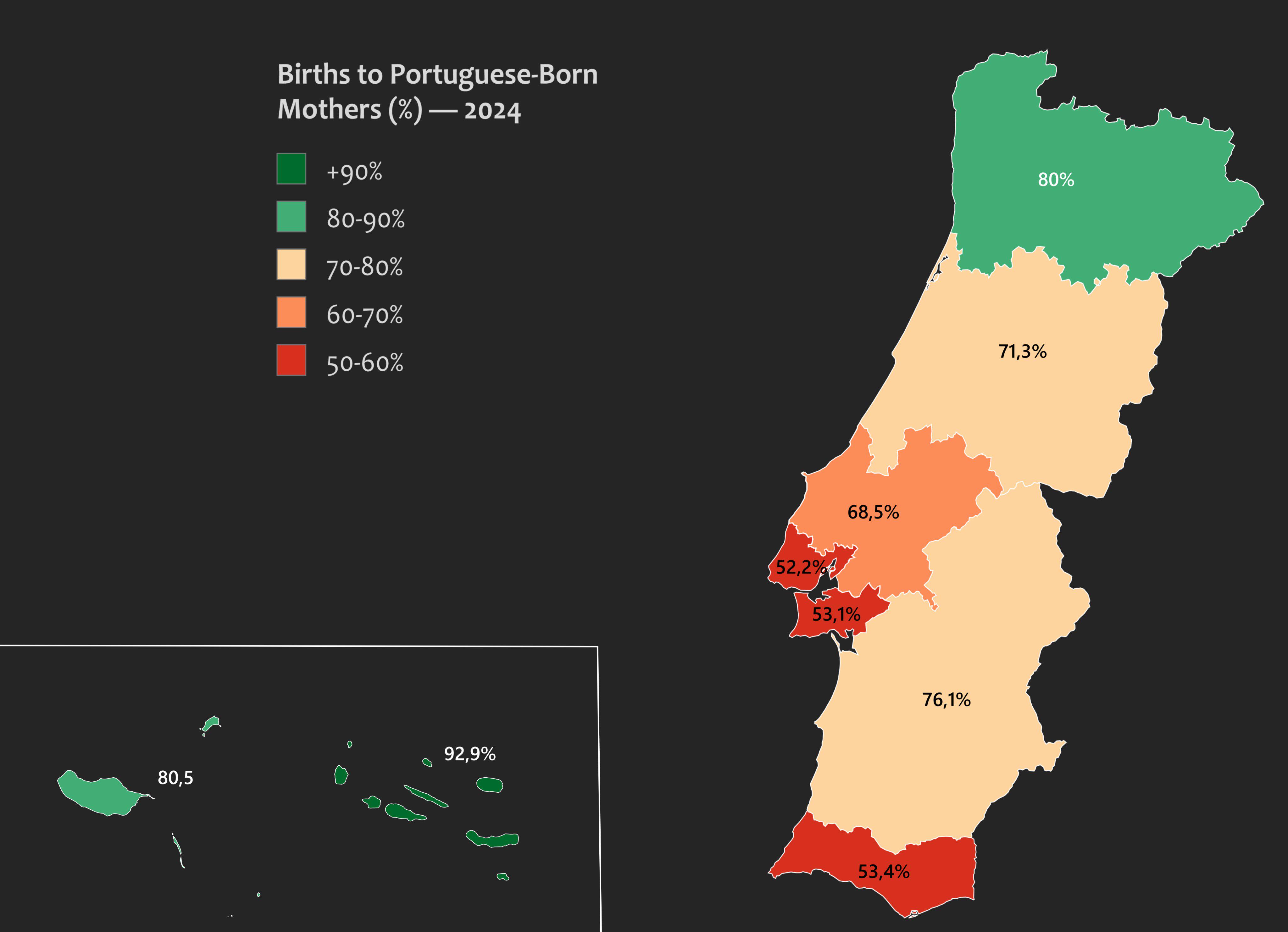Map of Births to Portuguese Born Mothers in Portugal 2024


Marcus Rodriguez
Historical Geography Expert
Marcus Rodriguez specializes in historical cartography and geographic data analysis. With a background in both history and geography, he brings unique...
Geographic Analysis
What This Map Shows\nThis map illustrates the percentage of births occurring to mothers who were born in Portugal, providing a clear visual representation of demographic trends throughout the country in 2024. By highlighting these percentages, we can gain insights into the population dynamics and the influence of maternal origins on birth rates in various regions. Understanding these patterns is crucial for grasping the broader context of social and economic factors that shape family structures and migration patterns.
Deep Dive into Birth Trends in Portugal\nThe birth rate within a country often reflects a multitude of socio-economic factors, including immigration, cultural norms, and healthcare accessibility. In Portugal, the percentage of births to mothers born in the country has been a topic of interest, particularly as the nation has experienced shifts in immigration patterns over the past few decades.
Interestingly, Portugal has seen an increase in immigration, especially from countries like Brazil, Angola, and other parts of Africa, which has influenced the demographics of new births. In 2024, it's estimated that approximately 75% of births are to mothers who were born in Portugal. This marks a slight decrease from previous years, signaling a growing diversity in maternal origins.
What's fascinating is how urban areas, particularly Lisbon and Porto, contrast with rural regions. In metropolitan areas, the percentage of births to non-Portuguese mothers can be significantly higher—sometimes exceeding 30%. This trend points to the vibrant immigrant communities in these cities, where multiculturalism is becoming more pronounced. Conversely, rural areas of Portugal, such as Alentejo or parts of the Algarve, tend to have a higher percentage of births to Portuguese-born mothers, often ranging from 85% to 90%.
Moreover, the socio-economic status of regions plays a pivotal role in these statistics. Urban centers with higher economic opportunities tend to attract younger, often immigrant families, leading to a more diverse birth profile. In contrast, less economically developed areas may retain more traditional family structures, resulting in higher percentages of births among native mothers.
Regional Analysis\nExamining the map reveals significant regional variations in the percentage of births to Portuguese-born mothers. For instance, in Lisbon, one of the most cosmopolitan cities in Europe, the diversity is striking. Here, the percentage of births to mothers not born in Portugal can reach as high as 35%, reflecting the city's status as a cultural melting pot.
In contrast, regions such as the Azores and Madeira Islands exhibit a starkly different picture. These areas, with their geographic isolation and slower economic growth, report upwards of 90% births to Portuguese-born mothers. The strong family ties and lower levels of immigration contribute to this high percentage.
Interestingly, the northern regions of Portugal, such as Minho and Trás-os-Montes, also show a predominance of births to mothers born in the country, often reflecting the traditional lifestyles and lower population mobility compared to urban centers. The map effectively highlights these disparities, allowing us to see how geography, economy, and culture interplay in shaping demographic trends.
Significance and Impact\nUnderstanding the dynamics of births to Portuguese-born mothers is crucial for policymakers, sociologists, and healthcare providers alike. With Portugal undergoing demographic transitions, recognizing the trends in maternal origins can inform public health initiatives, educational programs, and social services.
As immigration continues to shape the fabric of Portuguese society, the implications of these demographic changes will be profound. For instance, an increase in births to immigrant mothers may require adjustments in healthcare services and educational resources to cater to a more diverse population. Furthermore, these trends could influence labor markets, especially if younger immigrant families contribute to a future workforce.
Looking ahead, projections indicate that the percentage of births to Portuguese-born mothers may continue to decline if current immigration trends persist. This shift could lead to a more multicultural society, but it also poses challenges related to integration and social cohesion. Understanding these factors is essential for fostering a harmonious society in which all families, regardless of their origins, can thrive together.\n
Visualization Details
- Published
- August 10, 2025
- Views
- 80
Comments
Loading comments...